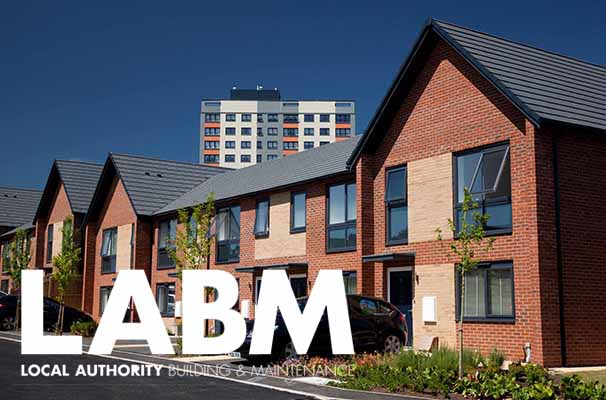
Paul Dawson, Group Technical Manager at LHC Procurement Group (LHC) discusses how frameworks support local authorities and housing associations to deliver fire safety projects and comply with building safety legislation.
The construction industry is currently undergoing the biggest changes to building and fire safety witnessed for a generation, as it adapts to the Building Safety Act 2022 (BSA), Fire Safety Act 2021, and Fire Safety (England) regulations 2022. The former establishes a more effective regulatory and responsibility framework and introduces clearer standards and guidance, putting residents at the heart of a new system of building safety. With the establishment of the Building Safety Regulator (BSR), the BSA places legal responsibilities on the whole supply chain to contribute to, maintain and manage safety information.

Clients are required to make a suitable arrangements for planning, managing and monitoring their project so that it complies with all relevant requirements. That also includes the management of a digital ‘Golden Thread’ of information from build through to maintenance, for higher risk buildings. This makes data capture all the more critical.
Mounting pressure
Not only do local authorities have to legally comply with the above, but they also face ongoing pressure to decarbonise their stock in the race to net zero and grappling with ongoing repair, maintenance and improvement programmes – all while trying to stay afloat financially.

Council budgets are being squeezed more than ever. In the past six years a total of eight local authorities have filed for bankruptcy (Section 114), whereas none had done so in the previous 18 years. One in five local authorities have expressed concerns about facing similar circumstances by 2030.
While managing their day-to-day responsibilities, teams up and down the country need support to know they are compliant. That’s where frameworks come in.
How can using framework help?
National frameworks offer a fast and efficient procurement route to market, where certain terms and rates have been pre-agreed and contractors have been pre-qualified. They bring together local authorities and tradespeople to facilitate the fastest and most efficient way of ensuring buildings are made and remediated to adhere with the regulations.
Clients are looking for trusted technical expertise. That’s why when designing frameworks; providers such as LHC dedicate time to engaging with the supply chain early and embedding their knowledge and insight into each framework. This close working ensures that frameworks are tailored to clients’ needs now and, as far as possible, for the four-year period the framework usually covers. This includes legislative requirements and relevant examples of best practice.
Before companies can be appointed to a framework, their QA processes, assurances, and data capture techniques are scrutinised. They are audited and assessed for their qualifications and competencies to ensure they have the correct credentials and resources to carry out the services outlined in the workstreams they have applied for.
This is all done to reassure and support local authorities and housing associations in their legal obligations. The idea is for them to have peace of mind, with the assurance that industry developments and best practice are followed.
Free-to-use frameworks
One thing to look out for is how frameworks bring supply chain experts together to service particular issues. For example, LHC has just launched a Fire Safety (FS2) framework, which will be live until February 2028. Designed collaboratively with industry experts, FS2 covers a comprehensive range of fire safety measures, including passive fire protection and containment, cladding and remediation services, fire detection and alarm systems, fire suppression systems, and consultancy services on fire risk assessments. The suite of measures has been places under one framework to reflect public sector client feedback and the marketplace, giving access to suitably qualified and experienced contractors and consultants via a single source.
Meanwhile, our ASC1 framework offers a full suite of asset safety and compliance support to help public sector organisations meet government guidelines and legal responsibilities relating to building life safety and maintenance. It was launched in October 2023, just a few months after the Social Housing (Regulation) Act 2023 became law.
As with all LHC frameworks, FS2 and ASC1 are designed for public sector use – including areas such as blue light services, NHS trusts, and universities, and so on.
Transforming public procurement
Change isn’t just happening in building safety but also in public sector procurement, with the introduction of the Procurement Act. Set to come into force in the autumn, it will bring a step change in how public goods and services are bought and commissioned.
There’s no doubt that the current regulatory landscape is a complex one for local authorities and housing associations alike, but the prospect of having to adjust to new regulations needn’t be a daunting one. If you work with a framework provider, the heard work is taken care of. The right one can support you with your developments from beginning to end, providing consultancy services throughout. You are not expected to go it alone.









